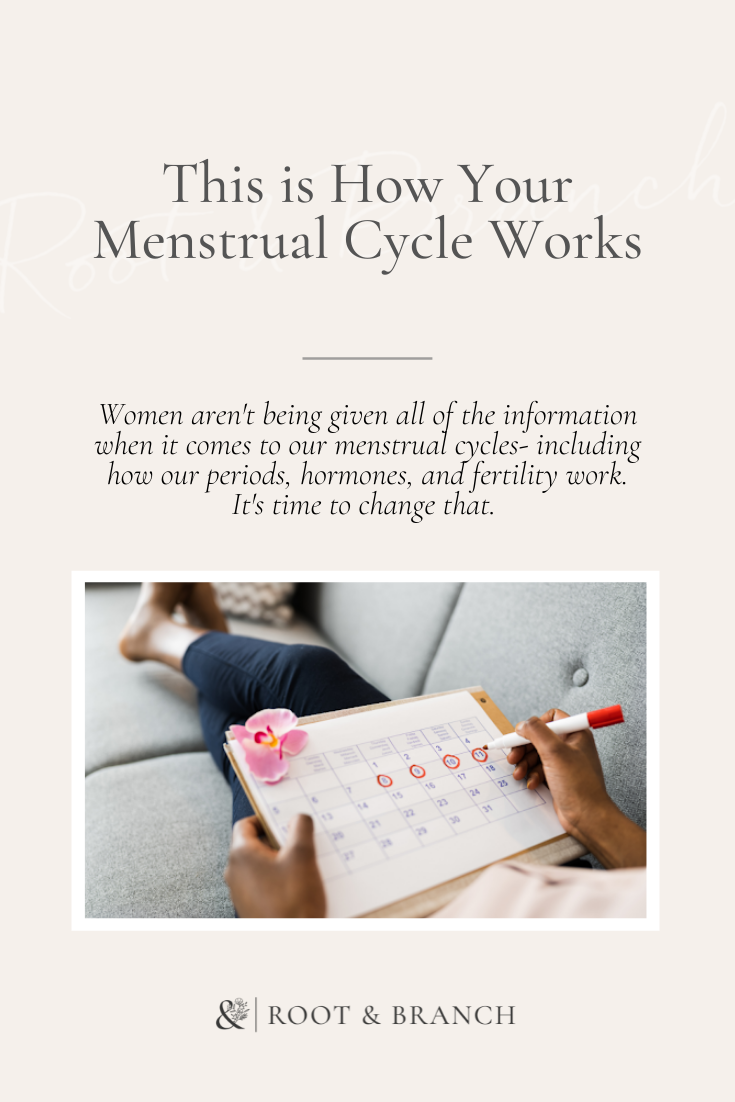This is How Your Menstrual Cycle Works
“This is how your menstrual cycle works.”
These are the words I wish I’d heard when I was younger when I was struggling with irregular cycles and painful periods that had me living in a constant state of anxiety.
When would the next one come? Where would I be? Would I need to miss school or take off of work? Would the ibuprofen actually help this time?
And while it would make sense to educate young women about this, it’s so different from what I remember being taught, the conventional narrative that most girls hear: “So, you’re going to get your period, it’s going to suck and it’s going to happen every month. It's just a shitty part of being a woman. Make sure you have a stash of pads and some Midol in your backpack!”
Then this message eventually turned into: “If you want to regulate your cycle and get rid of those intense cramps, you can just go on birth control."
The reality is that our menstrual cycles are actually really amazing, a blessing (not a curse), and hold so much power- yes, for allowing us to make babies but also both supporting and communicating our current health, building stores for our future health, and allowing us to live in a cyclical rhythm.
And women should be educated on how they work- including what’s actually going on during our periods, what supports fertility, how our hormones fluctuate, and what they do!
A quick rundown on how it works:
Day 1 of your cycle is when you start bleeding/get your period. You’re shedding the uterine lining that’s built up over the last few weeks and your hormones are at their lowest.
Follicle Stimulating Hormone (FSH) is then released, telling your ovaries to produce follicles, which produce estrogen. Estrogen helps thicken the uterine lining to prepare for pregnancy.
One of these follicles becomes dominant and matures an egg, releasing even more estrogen, which peaks just before ovulation.
The surge of estrogen prompts your body to release Luteinizing Hormone (LH), which ripens the egg and causes ovulation- the main event of the cycle. The dominant follicle ruptures, releasing the egg, which is sent to the uterus, where it lives for 24 hours.
The 5 days leading up to ovulation, and the 24 hours after (and potentially, 24 more on the rare chance you ovulate again)- is the only time you can get pregnant in your cycle- and more specifically, on the days your body is making fertile cervical mucus.
Want to track ovulation? Try the Inito Fertility Monitor (this link gets you 15% off), or Temp Drop Ovulation Tracker (this link gets you 10% off)!
The ruptured follicle produces some estrogen but most importantly, a bunch of progesterone, which raises our body temperature (as well as supports our overall health in many ways).
If the egg is fertilized, the embryo implants in the uterus, and progesterone remains elevated to support pregnancy until the placenta eventually takes over.
If the egg isn’t fertilized, it dies. Progesterone production declines and eventually ceases along with estrogen. The uterus produces pro-inflammatory hormones called prostaglandins to contract the uterus and shed the lining (which are also responsible for the cramping sensation we feel), and the whole cycle begins again at day 1 with your period (which PS, doesn’t need to be miserable!)
Knowing what I know now, I want to be sure more women and girls are provided with the information that will help them feel empowered in their bodies and more in tune with their cycles and proud of them!
That is why I created Nourished Roots, my online program that helps you understand how the female body works and exactly what it needs to function at its best.

